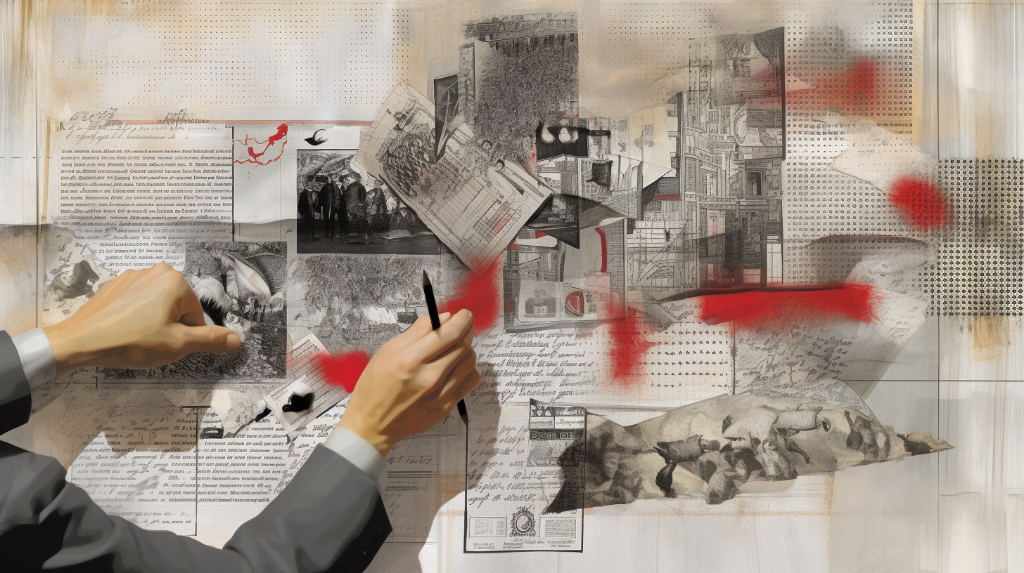Design thinking is an innovative approach that emphasizes creativity, empathy, and iteration to solve complex problems. This concept, which is deeply rooted in the tech industry, uses design principles to meet user needs in the most effective and user-friendly way. Design thinking exercises play a crucial role in this process, helping to spark the creative problem-solving skills necessary to develop groundbreaking solutions in the fast-paced world of technology.

Understanding the Fundamentals of Design Thinking
The design thinking process is generally divided into five stages: Empathize, Define, Ideate, Prototype, and Test. The Empathize stage involves understanding the needs and problems of the user. It’s about putting yourself in the shoes of the user to gain insights into their experiences. Next, in the Define stage, these insights are gathered to define the core problems that need to be solved.
The Ideate stage is where creativity comes into play. Here, brainstorming and out-of-the-box thinking are encouraged to generate a wide range of potential solutions. Once ideas are generated, the Prototype stage begins. This involves creating a scaled-down version of the product to identify the best possible solution. Finally, in the Test stage, the prototype is presented to the users for feedback, and the cycle may start again based on what is learned.
The Role of Design Thinking in the Tech Industry
In the tech industry, design thinking is a critical methodology for creating innovative solutions. It is used to develop products and services that not only solve a problem but also provide a seamless user experience. The tech industry thrives on innovation, and design thinking is one of the most effective ways to foster that innovation.
Design thinking brings the user into the center of the development process. This user-centric approach leads to products and services that truly meet user needs. Furthermore, it allows tech companies to stay ahead in the market by continuously innovating and improving their offerings.
Why Design Thinking Exercises are Crucial
Design thinking exercises are a key part of the design thinking process. They serve as practical tools for developing critical skills such as creativity, empathy, and problem-solving. These exercises allow individuals and teams to step outside their normal thinking patterns and explore new ways of approaching problems.
Through these exercises, individuals and teams can gain a deeper understanding of the user’s perspective, generate a wide variety of ideas, and learn how to iterate and refine their solutions. In essence, design thinking exercises are a hands-on way to practice and apply the principles of design thinking.
Different Types of Design Thinking Exercises
Design thinking exercises come in a variety of forms, each serving a specific purpose within the different stages of the design thinking process. These exercises encourage active participation, stimulate creativity, and foster a deeper understanding of the problem at hand. Let’s explore some of these exercises and how they align with the design thinking stages.
Remember, the goal is not just to think outside the box, but to redefine the box entirely. Ready to dive in?
Empathy Mapping
Empathy mapping is an exercise that directly aligns with the ‘Empathise’ stage of design thinking. The goal here is to gain a deeper understanding of the user’s needs, desires, and potential challenges. This is achieved by visualising what the user says, does, thinks, and feels.
By creating an empathy map, you can step into the user’s shoes and see the world from their perspective. This exercise is key in ensuring the solution you design truly resonates with the user and addresses their needs effectively.
Rapid Ideation
When it comes to the ‘Ideate’ stage of design thinking, Rapid Ideation is a go-to exercise. This brainstorming technique encourages participants to generate as many ideas as possible in a short period of time. The emphasis here is on quantity over quality, as the goal is to push past obvious solutions and uncover innovative ideas.
During a Rapid Ideation session, no idea is considered too outlandish or impractical. This free-flowing, non-judgmental environment often leads to the most creative and groundbreaking solutions. So, ready to let those ideas flow?
Prototype and Testing
Prototyping and testing are exercises that form the backbone of the ‘Prototype’ and ‘Test’ stages of design thinking. In these exercises, the ideas generated in the previous stage are transformed into tangible prototypes. These prototypes are then tested to gather user feedback.
This iterative process of building, testing, and refining helps in improving the final product or solution, ensuring it is user-friendly and effective in solving the problem at hand.
Importance of Collaboration in Design Thinking Exercises
Teamwork plays a vital role in design thinking exercises. The diverse perspectives that each team member brings to the table can lead to more comprehensive problem understanding and more innovative solutions.
Collaboration not only enriches the ideation process but also fosters a sense of shared ownership and commitment to the solution. After all, isn’t it fascinating how different minds can come together to turn a simple idea into a game-changing solution?
Getting Started with Design Thinking Exercises
Starting with design thinking exercises may seem daunting at first. But the key is to approach it with an open mind. Embrace the process and the potential it has to bring about innovative solutions. Remember, the beauty of design thinking lies in iteration. It’s about learning, adapting, and continually improving.
Having a willingness to learn from failures is another crucial aspect. Design thinking exercises are not about getting it right the first time. Instead, they provide an opportunity to experiment, make mistakes, learn, and grow. So, don’t be afraid to fail. See it as a stepping stone towards achieving better and more creative solutions.
How to Facilitate a Design Thinking Exercise
Facilitating a design thinking exercise can be as challenging as participating in one. The responsibility of creating a conducive environment for ideas to flow freely lies on your shoulders. But how can you effectively facilitate a session?
Start by ensuring that everyone understands the purpose of the exercise and the problem they are trying to solve. Encourage participants to share their ideas, no matter how out-of-the-box they may seem. Remember, there are no bad ideas in a brainstorming session.
Ensure that the environment is supportive and non-judgmental. Participants should feel comfortable expressing their thoughts without fear of criticism. This atmosphere promotes creativity and innovation, which are vital in design thinking exercises.
Common Pitfalls to Avoid in Design Thinking Exercises
While design thinking exercises are an excellent tool for sparking creativity and innovative problem-solving, there are pitfalls you need to avoid to ensure success.
One common mistake is rushing through stages. Each stage of the design thinking process is crucial and requires time and attention. Skipping or rushing through a stage can lead to a lack of understanding of the problem or the generation of ineffective solutions.
Another pitfall is not fully understanding the user’s needs. Empathy is at the heart of design thinking. Without a deep understanding of the user’s needs and perspective, the solutions generated may not effectively address the problem at hand.
It’s also essential to avoid the trap of assuming you know everything. The design thinking process is a learning journey. Maintain a learner’s mindset, be open to new ideas, and be willing to iterate based on feedback and insights.

Design Thinking Exercises for Self-improvement
Design thinking isn’t just for teams or companies; it’s also a powerful tool for personal growth. The exercises that we associate with this problem-solving method can be just as effective when applied on an individual level. Ever wondered how you can enhance your creative thinking and problem-solving skills? Let’s explore.
Journaling
Journaling is a powerful tool for self-reflection and can be used as a way to practice the ’empathize’ and ‘define’ stages of design thinking. By writing down your thoughts, feelings, and observations, you can gain a deeper understanding of your own needs and challenges. This self-awareness is the foundation for empathy and problem definition in design thinking.
Mind Mapping
Another exercise that can be done alone is mind mapping. This is essentially a visual way to explore ideas and their connections, much like the ‘ideate’ stage of design thinking. By creating a mind map, you are visually exploring different possibilities and connections, which can lead to innovative solutions.
Prototyping
Prototyping isn’t just for product design. You can apply the principles of this stage to personal challenges as well. For instance, if you’re trying to improve a personal habit, you could ‘prototype’ different strategies and ‘test’ them to see which works best for you.
The Future of Design Thinking Exercises
As technology advances and the demand for innovative solutions in the tech industry increases, design thinking exercises are continuously evolving and becoming even more relevant. They are being integrated into AI and machine learning, virtual reality, and even blockchain technologies. The question that arises is, how do you think these exercises will continue to shape the future of problem-solving?
With the rise of remote work and digital collaboration tools, it is likely that we will see an increase in virtual design thinking exercises. These exercises will utilize digital tools to facilitate collaboration and idea generation, even when team members are not physically present in the same location.
Moreover, as technology becomes more sophisticated, we might see design thinking exercises that incorporate advanced tools like virtual or augmented reality. These technologies could provide new ways to visualize and prototype solutions, pushing the boundaries of what is currently possible.
Wrapping up
In conclusion, design thinking exercises are a vital tool in the tech industry for sparking creative problem-solving. Whether used individually for personal growth or collaboratively in a team, these exercises can help you develop essential skills like empathy, creativity, and problem-solving.
As we look to the future, it’s clear that these exercises will continue to evolve alongside technological advancements, providing even more opportunities for innovation. So, why not start practicing these exercises today? Enhance your creative and problem-solving skills and be ready to create innovative solutions in the ever-evolving tech industry.
